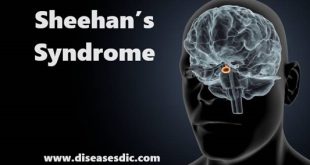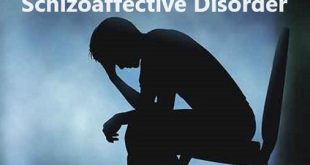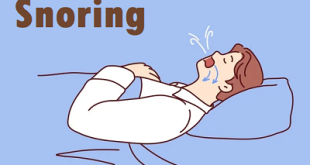Definition
Stretch marks (striae or striae distensae) is a form of scarring on the skin with a pinkish or whitish hue that appears when your skin stretches or shrinks quickly.
Collagen is a protein underneath your skin that makes it more elastic and supports your skin. Your skin tries to heal any abrupt change or tear in your skin collagen, and in that process, stretch marks may appear on your skin.
They often appear on your belly, arms, breasts, back, shoulders, torso, hips, buttocks or thighs. These grooves or lines aren’t painful or harmful. However, some people may feel awkward about their appearance. Over time, they become less noticeable.
Types of Stretch Marks
Stretch marks are often categorized by cause and duration. Here are some of the more common types are as follows:
- Striae rubrae: Early or new stretch marks
- Striae albae: Older stretch marks
- Striae gravidarum: Pregnancy stretch marks
Stretch Marks risk factors
Anyone can develop stretch marks, but some factors increase your likelihood of getting them, including:
- Being female
- Having a personal or family history of stretch marks
- Being pregnant, especially if you’re young
- Rapid growth in adolescence
- Rapidly gaining or losing weight
- Using corticosteroids
- Having breast enlargement surgery
- Exercising and using anabolic steroids
- Having a genetic disorder such as Cushing’s syndrome or Marfan syndrome
Causes
There is some controversy over the precise mechanism by which striae occur. There seems to be damage to the elastic fibers of the dermis (the deeper layer of the skin) accompanied by inflammation which eventually results in atrophic scar-like changes.
Excessive physical stretching of the skin appears to induce these changes.
There are a number of clinical situations that will predispose the skin to the formation of striae. These include
- Rapid and excessive increase in body mass (weight gain),
- The excessive use of topical or systemic glucocorticoid drugs (steroids),
- Cushing’s disease (overproduction of glucocorticoids by the adrenal gland),
- Puberty
- Marfan syndrome and Ehlers-Danlos syndrome (two uncommon genetic diseases),
- Excessively large breasts or breast implants, and
- Pregnancy
Symptoms
When due to being overweight (obesity) in children, it is usually seen on both sides of the body (symmetrically); they are most visible on the thighs, arms, and belly and are sometimes seen over the back, buttocks, and knee regions.
It may be widespread, or it may appear in other locations in people who use corticosteroids or have certain diseases.
It may change in appearance with time:
- In early stages, they are faint, pink, parallel, band-like marks arranged in a line, and they might itch slightly.
- They gradually enlarge and become red to purple, often with a wrinkled surface.
- Finally, they become white, slightly depressed, crepe-paper-like linear marks, 1–10 mm wide and many centimeters long.
Complications
It doesn’t usually present complications except for the cosmetic aspects. If the striae are very widespread and in great quantity, it could, in some case, break by accident.
Diagnosis and test
It is easily diagnosed based on a skin examination and a review of a person’s medical history.
The doctor will usually ask questions based on signs and symptoms, as well as any medications currently being used or existing medical conditions.
It is not harmful and do not cause medical problems. In rare cases, they may indicate an underlying medical issue that requires treatment or monitoring.
Treatment and medications
A range of medical treatments and home remedies is available to treat it. Some work better than others.
Medical treatment
A skin doctor or plastic surgeon can use lasers or other treatments to help fade the marks. It may help your skin make more collagen:
Pulsed dye laser therapy is a painless blast of light used on new, red stretch marks. The light’s energy calms blood vessels under your skin that could cause the marks.
Fractional CO2 laser therapy is a new treatment that may smooth out old, white stretch marks. One study showed that women’s stretch marks faded after five sessions compared to others who used topical creams with glycolic acid and tretinoin.
Excimer laser therapy exposes stretch marks to targeted ultraviolet B (UVB) light. A small study shows that it’s safe and treatments over 1 to 4 months can correct pigment problems from stretch marks.
Microdermabrasion uses tiny crystals to rub off the top layer of your skin. One new study showed that this treatment helped fade new, reddish stretch marks when combined with skin peels.
Cosmetic surgery, like a tummy tuck, may remove skin with stretch marks. But these operations could leave scars. Plus they’re often painful and costly.
Chemical peel is an acidic solution that burns off the top layers of your skin to remove dead and damaged cells and boost new skin growth. This treatment may improve your stretch marks a little, but won’t completely get rid of them.
Radiofrequency uses radio wave energy to create heat and trigger your body to make collagen. One small study found this treatment is safe and can improve it, but scientists need to do more research.
Ultrasound works a lot like radiofrequency treatments. The procedure sends sound waves deep into your skin to heat and tighten and jumpstart collagen production.
Home remedies for stretch marks
You’ll find many creams, salves, oils, and other skin ointments that claim to either prevent or treat them. But there’s little proof that any of these products really work. Some treatments and home remedies can fade or hide stretch marks:
Body makeup and self-tanner: These products can help hide stretch marks. Note that tanning won’t get rid of stretch marks. It actually makes them easier to see.
Tretinoin: Creams with tretinoin (Retin-A) contain retinoid, a compound related to Vitamin A. Retinoids increase collagen production. They’re often used to treat wrinkles. They may help fade newer marks, but they can also make your skin red, irritated, or scaly.
Collagen boosters: StriVectin-SD and lupin seed extracts are both supposed to increase collagen in your skin, but it’s hard to say if they’ll fade or prevent stretch marks.
Centella asiatica: This herbal oil boosts cells in your body that make collagen and build up skin tissue. Some people use it to help heal wounds. Centella asiatica is in a number of over-the-counter skin creams for stretch marks, but there’s little proof it helps to fade them.
Bitter almond oil: One study showed that women who massaged bitter almond oil into the skin on their bellies during pregnancy had fewer stretch marks than others who just used oil without massage.
Cocoa butter, shea butter, olive oil, vitamin E oil, and other moisturizers: These natural creams can make your skin feel softer, but it isn’t clear if they help or prevent stretch marks.
If you decide to try a cream, lotion, or gel to fade your stretch marks, be sure to use it every day for several weeks. Take the time to massage it into your skin. These products may work best on newer stretch marks.
Prevention of stretch marks
Certainly, there is a lot of talk about preventing stretch marks in pregnancy. While there are absolutely steps you can take to try to minimize stretch marks in pregnancy, true prevention is technically not possible for every mother. Some of what will determine whether or not you get stretch marks is genetic.
Do you have a family history of really awful stretch marks? If yes, you may be fighting a really hard battle, but there are things that you can do that may help you avoid severe stretch marks.
Watch the weight gain: Try to gain weight slowly and steadily. You should also avoid excess weight gain.
Eat well: Healthy skin has fewer marks. Good nutrition is a part of that process.
Use creams and lotions: This is partly old wives tale and partly comforts measure, but keeping your belly lathered up is never a bad idea.
 Diseases Treatments Dictionary This is complete solution to read all diseases treatments Which covers Prevention, Causes, Symptoms, Medical Terms, Drugs, Prescription, Natural Remedies with cures and Treatments. Most of the common diseases were listed in names, split with categories.
Diseases Treatments Dictionary This is complete solution to read all diseases treatments Which covers Prevention, Causes, Symptoms, Medical Terms, Drugs, Prescription, Natural Remedies with cures and Treatments. Most of the common diseases were listed in names, split with categories.








what concealer can hide it?
If you wish to temporarily get rid of your Stretch Marks, Veil Cover Cream is an effective Stretch Mark Concealer which can conceal the coloured red and purple appearance of the marks